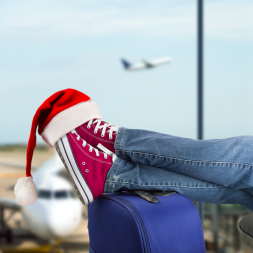Medical Assistance in Flight: What’s Your Liability Risk?
Last week I was sitting on a flight back to Nashville eyes shut and drooling on my inflatable neck pillow when I felt a friend tap me on a shoulder. “The flight attendants are asking for someone who can offer medical assistance to a passenger” she said. These kinds of situations always make me nervous.
Offering medical assistance outside of my work setting gives me pause. First, without access to certain resources such as medications, the kind of assistance I’m able to offer is limited. Second, there is the question of safety. Will I have protection from blood borne pathogens available, for example? Finally, I have always been unclear a to my liability as a medical provider when it comes to offering aid outside of the clinical setting. Morally, of course, I feel that I should help others in medical need. Legally, however, I could be putting myself at risk by stepping out.
The logistics and legality behind medical emergencies in flight are well thought out thanks to FAA regulations and the federal government’s Aviation Medical Assistance Act of 1998. Here are a few things nurse practitioners should be aware of when offering medical assistance in the air.
Medical Providers Are Legally Protected
Under the Aviation Medical Assistance Act of 1998, nurse practitioners and other medical providers offering in-flight medical assistance are legally protected. Providers are under no legal obligation to help in these circumstances, but those who do so cannot be held liable for actions taken within their scope of practice in flight. The Aviation Medical Assistance Act states that “An individual shall not be held liable for damages in any action brought in a Federal or State court arising out of the acts or omissions of the individual in providing or attempting to provide assistance in the case of an in-flight medical emergency unless the individual, while rendering such assistance, is guilty of gross negligence or willful misconduct”.
What About International Flights?
International flights may have different laws protecting medical providers acting as Good Samaritans. Canada and the United Kingdom, for example, have laws similar to those in the U.S. protecting medical providers who offer medical help onboard aircraft. In general, the laws governing the country in which the aircraft is based take effect during an in flight emergency. If, for example, you are on a British Airways flight from Seattle to London, you would be held to the standards of the British government.
Airlines Carry Medical Equipment
Airlines are required by the Federal Aviation Administration to carry a minimum amount of emergency medical equipment. Any plane weighing more than 7,500 pounds with at least one flight attendant must have an AED on board. The FAA also mandates that an emergency medical kit (EMK) stocked with specific supplies be carried on such flights. This kit may only be opened by medical personnel, not flight attendants.
Emergency medical kits carry medications such as Benadryl and epinephrine ampules, albuterol, nitroglycerine, atropine, and dextrose. Other supplies include resuscitation equipment, IV materials, reference manuals, gloves, and a stethoscope. Be aware that basic first aid supplies may be stocked separately so you should as for both the first aid kit and EMK in a medical emergency. Supplemental oxygen is also available, although not at as high of a flow rate as is typically seen in the hospital setting.
You Have Backup
Airlines contract with companies that offer medical advice via radio in case of emergency. For example, KLM Airlines contracts directly with the Mayo Clinic for medical advice while many other airlines use services like MedLink or MedAire for in-flight medical support. These services allow flight crew almost instant access to advice from an emergency physician.
The American Medical Association recommends that medical providers not advise whether a flight needs to be rerouted or can safely make it to its destination in the case of an emergency. Rather, the organization suggests that providers “offer a medical opinion about the patient’s condition and prognosis in terms of time”. Leave decisions about the flight plan to the pilot.
The Bottomline?
Overall, provided that you act within your scope of practice and to the best of your abilities in response to a medical emergency, as a nurse practitioner are legally protected for the help you offer in flight. Be aware of the resources available to you including telephone support from emergency physicians on the ground.
Fortunately, the in flight emergency with which I was called upon to assist was a situation I encounter frequently in the emergency department. I was able to intervene and offer advice including the need for prompt follow up and was not asked to make a decision regarding the plane’s flight path.
Have you ever been called on to offer medical assistance in the air?
You Might Also Like: Is It Ever Acceptable for a Nurse Practitioner to Date a Patient?

